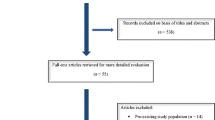Abstract
Stainless steel embolization coils (SSEC) have been used for over four decades for vascular occlusion. Recently, the safety of these coils in a magnetic resonance environment has been called into question, with important ramifications for thousands of patients with existing coils in place. We performed a retrospective chart review at five tertiary care pediatric centers evaluating all children and young adults with implanted SSEC who underwent magnetic resonance imaging (MRI). Data reviewed included demographics, coil implantation, MRI studies, and follow-up evaluations. Complications such as heating, discomfort, or device migration were specifically sought. Two hundred and ninety-seven patients with implanted SSEC underwent 539 MRI examinations. The median age at SSEC implantation was 2.3 years (1 week–23.2 years). The MRI studies were performed a median of 7.4 years (4 days–23.1 years) after implantation. No patients experienced any reported complications associated with their MRI examinations during the study or at median follow-up post-MRI of 4.8 years (1 day–23 years). In this large, retrospective review of patients with implanted SSEC undergoing MRI, there were no reported adverse events. These findings support the recent change by Cook Medical Inc. of their standard embolization coils from a designation of magnetic resonance unsafe to conditional.




Similar content being viewed by others
Abbreviations
- ASTM:
-
American Society for Testing and Materials
- MR:
-
Magnetic resonance
- MRI:
-
Magnetic resonance imaging
- SSEC:
-
Stainless steel embolization coils
References
ASTM F2052–06e1 (2006) Standard test method for measurement of magnetically induced displacement force on medical devices in the magnetic resonance environment. ASTM International, West Conshohocken
ASTM F2119–01 (2001) Standard test method for evaluation of MR image artifacts from passive implants. ASTM International, West Conshohocken
ASTM F2182–02a (2002) Standard test method for measurement of radio frequency induced heating near passive implants during magnetic resonance imaging. ASTM International, West Conshohocken
ASTM F2213–06 (2006) Standard test method for measurement of magnetically induced torque on medical devices in the magnetic resonance environment. ASTM International, West Conshohocken
ASTM F2503–05 (2005) Standard practice for marking medical devices and other items for safety in the magnetic resonance environment. ASTM International, West Conshohocken
Cook Medical memo for discontinuation of stainless steel embolization coils (2012). http://www.cookmedical.com/di/content/mmedia/PI_SS_Coil_Discontinuation.pdf. Accessed 1 Aug 2013
Cook Medical MReye embolization coil brochure (2006). http://www.cookmedical.com/di/content/mmedia/MREYE306.pdf. Accessed Jan 8 2013
Dedini RD, Karacozoff AM, Shellock FG, Xu D, McClellan RT, Pekmezci M (2013) MRI issues for ballistic objects: information obtained at 1.5-, 3- and 7-Tesla. Spine J 13:815–822
Garg R, Powell AJ, Sena L, Marshall AC, Geva T (2005) Effects of metallic implants on magnetic resonance imaging evaluation of Fontan palliation. Am J Cardiol 95:688–691
Gianturco C, Anderson JH, Wallace S (1975) Mechanical devices for arterial occlusion. Am J Roentgenol Radium Ther Nucl Med 124:428–435
Goldstein HM, Wallace S, Anderson JH, Bree RL, Gianturco C (1976) Transcatheter occlusion of abdominal tumors. Radiology 120:539–545
Grifka RG, Fenrich AL, Tapio JB (2008) Transcatheter closure of patent ductus arteriosus and aorto-pulmonary vessels using non-ferromagnetic Inconel MReye embolization coils. Catheter Cardiovasc Interv 72:691–695
Gurtcheff SE (2008) Introduction to the MAUDE database. Clin Obstet Gynecol 51:120–123
Kainz W (2007) MR heating tests of MR critical implants. J Magn Reson Imaging 26:450–451
Liu Y, Chen J, Shellock FG, Kainz W (2013) Computational and experimental studies of an orthopedic implant: MRI-related heating at 1.5-T/64-MHz and 3-T/128-MHz. J Magn Reson Imaging 37:491–497
McComb C, Allan D, Condon B (2009) Evaluation of the translational and rotational forces acting on a highly ferromagnetic orthopedic spinal implant in magnetic resonance imaging. J Magn Reson Imaging 29:449–453
Published memo from cook medical on designation change for stainless steel embolization coils to MR conditional. Dated March 14 2012
Published memo from cook medical on designation of stainless steel embolization coils changing to MR unsafe. Dated Feb 25 2011
Shellock FG (2007) Comments on MR heating tests of critical implants. J Magn Reson Imaging 26:1182–1185
Shellock FG, Slimp G (1990) Eddy-current-induced artifacts caused by an “MR-compatible” halo device. Radiology 175:586
Shellock FG, Slimp G (1990) Halo vest for cervical spine fixation during MR imaging. AJR Am J Roentgenol 154:631–632
Shellock FG, Morisoli S, Kanal E (1993) MR procedures and biomedical implants, materials, and devices: 1993 update. Radiology 189:587–599
U.S. FDA, CDRH (1997) A primer on medical device interactions with magnetic resonance imaging systems. http://www.fda.gov/MedicalDevices/DeviceRegulationandGuidance/GuidanceDocuments/ucm107721.htm. Accessed 16 Dec 2012
Wallace S, Gianturco C, Anderson JH, Goldstei NH, Davis LJ, Bree RL (1976) Therapeutic vascular occlusion utilizing steel coil technique: clinical applications. AJR Am J Roentgenol 127:381–387
Acknowledgments
There are no specific acknowledgements. None of the authors received any funding for this project or manuscript.
Author information
Authors and Affiliations
Corresponding author
Ethics declarations
Conflict of interest
The authors have no relevant financial or non-financial interests to disclose.
Rights and permissions
About this article
Cite this article
Slesnick, T.C., Schreier, J., Soriano, B.D. et al. Safety of Magnetic Resonance Imaging After Implantation of Stainless Steel Embolization Coils. Pediatr Cardiol 37, 62–67 (2016). https://doi.org/10.1007/s00246-015-1240-3
Received:
Accepted:
Published:
Issue Date:
DOI: https://doi.org/10.1007/s00246-015-1240-3




